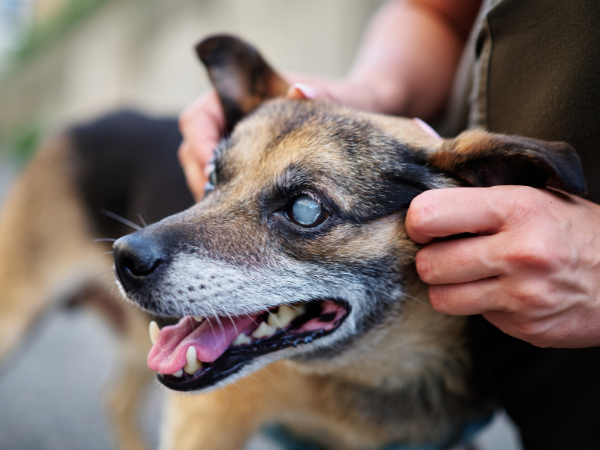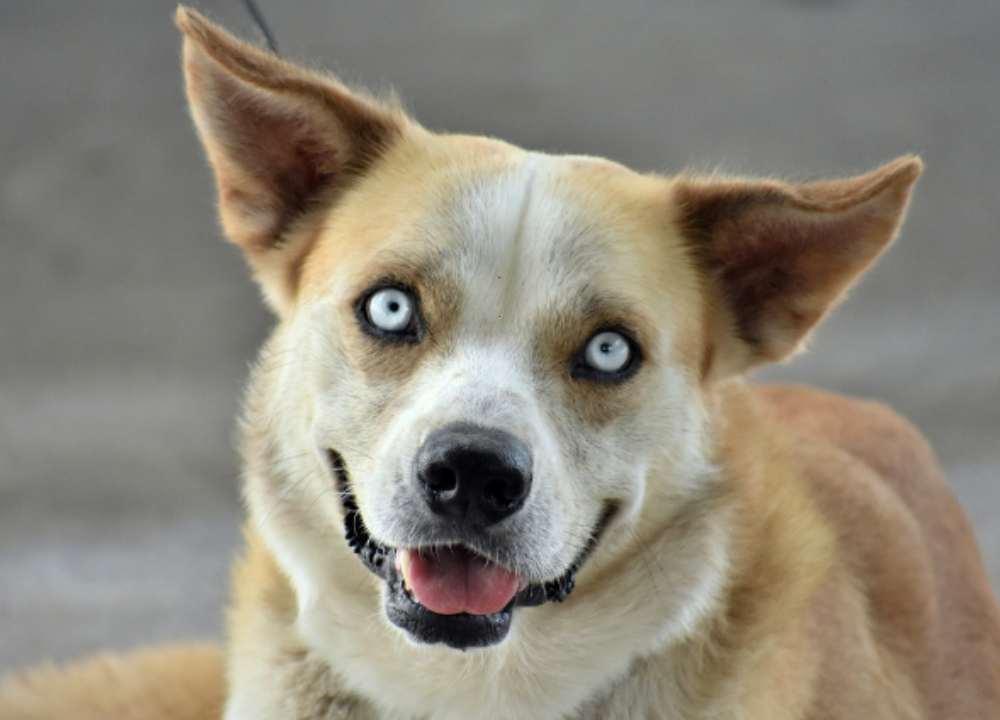A Skinwalker Dog, rooted in Native American folklore, is tied to the idea of skinwalkers who transform into animals. Some believe these creatures walk among us.
These beings are part of rich storytelling traditions. They can evoke fear and intrigue, revealing deeper cultural beliefs. The Skinwalker Dog, specifically, holds a unique place in this mythology. It represents the blend of animal and human traits.
What Is A Skinwalker Dog?
The term “Skinwalker Dog” has intrigued many due to its mysterious nature. Understanding what a Skinwalker Dog is requires delving into these ancient stories and their significance.
Origins Of The Skinwalker Legend
The Skinwalker legend is deeply rooted in Native American traditions, particularly within the Navajo culture. These stories often involve individuals with the ability to transform into animals. This transformation is not just a change in appearance but also in essence and abilities.
According to Navajo beliefs, a Skinwalker is a type of witch who can assume the shape of any animal. They are often depicted as evil beings who gain power through dark rituals. These rituals might include:
- Chanting secret incantations
- Using special herbs and potions
- Performing ceremonies under the cover of night
Skinwalkers are feared and respected in Navajo culture due to their mystical powers. People believe that encountering a Skinwalker can bring misfortune or harm.
| Element | Description |
|---|---|
| Transformation | Ability to turn into any animal |
| Rituals | Dark ceremonies for gaining power |
| Fear | Believed to bring misfortune |
These legends are passed down through generations, keeping the mystique of the Skinwalker alive in modern times.
What Is The Connection Between Skinwalkers And Dogs?
In Navajo culture, dogs hold a special place. They are seen as protectors and companions. This connection makes the idea of a Skinwalker Dog even more intriguing and frightening.
Skinwalkers are believed to take the form of dogs for several reasons:
- Dogs are trusted by humans, making it easier for Skinwalkers to approach unnoticed.
- Dogs have keen senses, which Skinwalkers can use to their advantage.
- The form of a dog allows for swift movement and stealth.
Stories often describe Skinwalker Dogs as having unusual characteristics. These might include:
- Glowing eyes
- Unusually large size
- Strange, human-like behavior
Encounters with these creatures are often chilling. Witnesses report feeling an overwhelming sense of dread. This fear is not just due to the appearance of the Skinwalker Dog but also its reputation for malevolence.
How To Know If Your Dog Is A Skinwalker
Skinwalker dogs can take on the form of dogs or other animals. Many wonder how to tell if their dog is a skinwalker. Recognizing the signs and behaviors can help clarify any concerns.
Signs And Behaviors Commonly Attributed To Skinwalker Dogs
Skinwalker dogs exhibit unusual signs and behaviors. Understanding these traits can help identify them.
- Strange Vocalizations: Unusual howling or barking at odd hours.
- Unexplained Aggression: Sudden hostility towards people or other animals.
- Unusual Attraction to Shadows: Fixation on dark areas or moving shadows.
- Disappearance: Vanishing for long periods and returning unexpectedly.
- Changes in Eyes: Glowing or reflecting light differently at night.
Being aware of these signs is crucial. If your dog displays these traits, it may be time to evaluate the situation.
Physical Characteristics: Fact Or Fiction?
The physical traits of skinwalker dogs often blend myth with reality. They may appear like ordinary dogs, but some unique features are noted.
- Unusual Fur Color: Darker shades or mixed colors not common in local breeds.
- Size Variations: Larger or smaller than expected for their breed.
- Eye Color: Uncommon colors like bright yellow or red.
- Deformed Paws: Irregular shapes or sizes.
- Strange Movement: Jerky or unnatural walking patterns.
Some believe these features indicate supernatural origins. Others think they are simply myths. Consider the following table for clarity:
| Physical Trait | Significance |
|---|---|
| Unusual Fur Color | May suggest a skinwalker identity. |
| Size Variations | Indicates potential transformation. |
| Eye Color | Uncommon colors linked to supernatural beings. |
| Deformed Paws | Could signal unnatural influences. |
| Strange Movement | Possible sign of otherworldly presence. |
Understanding these traits helps demystify the idea of skinwalker dogs. Evaluating both behavior and physical characteristics is essential.
Skinwalker Dog Eyes: What Do They Reveal?
The eyes of a Skinwalker Dog are particularly important. They can reveal much about the creature. What do these eyes signify? Let’s explore the meaning behind them.

The Role Of Eyes In Skinwalker Legends
In many legends, eyes serve as a window to the soul. This idea is strong in Skinwalker stories. The eyes of a Skinwalker Dog are said to hold supernatural power. They can show a mix of emotions, from anger to sadness. Here are some key points about the role of eyes:
- Symbol of Evil: Dark eyes often symbolize the presence of evil.
- Window to Intent: The gaze can reveal the creature’s intentions.
- Fear Inducer: Unusual eyes can evoke fear in those who see them.
Many tales describe encounters with Skinwalker Dogs. These stories often highlight the striking and unsettling nature of their eyes. Below is a table that summarizes common beliefs:
| Eye Color | Symbolism |
|---|---|
| Red | Anger and malice |
| Yellow | Ill intent and danger |
| Black | Soulless and eerie presence |
These legends show how eyes carry deep meaning. They create a lasting image of fear and intrigue.
Common Descriptions Of Skinwalker Dog Eyes
Descriptions of Skinwalker Dog eyes vary across tales. Most share some common themes. These eyes often appear unnatural and chilling. Here are some typical descriptions:
- Glowing: Many reports say the eyes glow in the dark.
- Large: Skinwalker Dog eyes are often described as oversized.
- Unblinking: They rarely blink, adding to their unsettling nature.
Witnesses describe their feelings during encounters. Fear is the most common emotion. Some feel a sense of dread. Others report feeling watched. This leads to questions about the true nature of these eyes. Below is a list of feelings experienced by witnesses:
- Overwhelming fear
- Feeling of being hunted
- Curiosity mixed with dread
The eyes of a Skinwalker Dog are often seen as symbols of warning. They alert the observer to danger. This combination of fear and fascination makes these eyes a crucial part of the legend.
Myth Vs. Reality: Can Eyes Indicate A Skinwalker?
Many people wonder about the reality of Skinwalker Dogs. Can their eyes truly indicate danger? Some argue that myths hold grains of truth. Others believe these tales are pure fiction. Here are some points to consider:
- Folklore Basis: Skinwalker stories come from cultural beliefs.
- Psychological Effects: Fear can distort perception of reality.
- Community Impact: These myths can shape community behaviors.
Some experts explore the psychology behind these tales. Fear can lead people to interpret normal situations in strange ways. Here’s a brief overview of how eyes may influence thoughts:
| Aspect | Effect |
|---|---|
| Fearful Gaze | Increases anxiety and panic |
| Bright Eyes | Indicates alertness and danger |
In many cases, the eyes of a Skinwalker Dog serve as a powerful symbol. They remind us of the thin line between myth and reality. Beliefs shape how people interpret their experiences.
Cultural And Modern Interpretations Of Skin-walker
In many cultures, particularly among Native Americans, the Skinwalker embodies transformation and fear. This entity is often depicted as a shapeshifter, able to take on various animal forms.
Skin-walker In Native American Mythology
In Native American mythology, particularly in Navajo culture, a Skin-walker is a powerful witch capable of shapeshifting. This figure is feared and respected. Skin-walker can turn into various animals, including dogs, to gain strength or stealth. Here are some key points about Skinwalkers:
- Skin-walker are associated with dark magic.
- They are believed to have gained their powers through evil acts.
- Skin-walker often take the form of animals for personal gain.
In Navajo tradition, the Skinwalker dog is not just a myth but a warning. Encountering such a creature is seen as dangerous. Many believe that Skinwalkers can manipulate the spirits of animals. This belief creates a deep fear surrounding dogs. Here’s a table summarizing the characteristics of Skinwalkers:
| Aspect | Description |
|---|---|
| Transformation | Can change into various animals, including dogs. |
| Origin | Gained powers through evil deeds. |
| Cultural Impact | Shapes fears and beliefs about dogs in Native American culture. |
This mythology emphasizes the duality of dogs in Native American legend. They can be loyal companions or symbols of fear. The Skinwalker serves as a reminder of the unknown that lies within nature.
How The Legend Shapes Perceptions Of Dogs Today
The legend of the Skinwalker dog influences how many view dogs today. Some see them as protectors, while others view them with suspicion. This dual perception stems from the Skinwalker myth. In many communities, dogs are seen as more than pets.
- Dogs symbolize loyalty and companionship.
- They also represent a connection to the spiritual world.
In modern society, the Skinwalker myth can create fear around certain dog breeds. Misunderstandings lead to negative stereotypes. For example, some people may associate large breeds with danger. This perception can be traced back to the Skinwalker legend, where dogs are linked to dark forces. Here are some common beliefs:
- Large dogs are often viewed as threatening.
- Small dogs are considered harmless and friendly.
- People may distrust stray dogs due to myths.
These views affect how people interact with dogs. Knowledge of the Skinwalker can help reshape these perceptions. Understanding the legend can promote appreciation for dogs as loyal companions rather than fearful entities.

